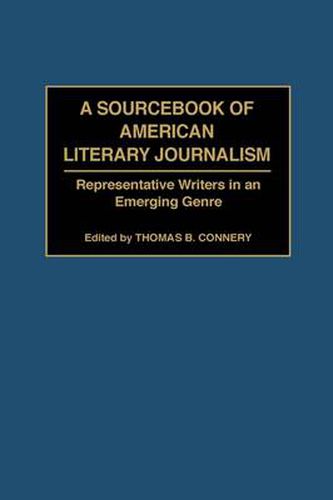Readings Newsletter
Become a Readings Member to make your shopping experience even easier.
Sign in or sign up for free!
You’re not far away from qualifying for FREE standard shipping within Australia
You’ve qualified for FREE standard shipping within Australia
The cart is loading…






A wide range of writers are brought together in this discussion of literary journalism of the 19th and 20th centuries. Such writing was not new journalism, therefore simply a type of realistic fiction. Rather, it can be examined as a distinct literary form, a type of cultural expression that can be defined and characterized. 35 essays by contributing scholars analyze major writers of this literary genre or writers known for a major work in the genre, and there are short pieces for nineteen additional figures. The volume introduction discusses definitions and characteristics of literary journalism, with reference to the patterns of reality depicted, and identifies two main types: those works characterized by immersion and shorter, more impressionistic pieces. The roots of this new journalism are traced, and ideas of the theorists of this genre are explicated. Conville also provides the results of his research - uncovering primary sources of literary journalism.
$9.00 standard shipping within Australia
FREE standard shipping within Australia for orders over $100.00
Express & International shipping calculated at checkout
A wide range of writers are brought together in this discussion of literary journalism of the 19th and 20th centuries. Such writing was not new journalism, therefore simply a type of realistic fiction. Rather, it can be examined as a distinct literary form, a type of cultural expression that can be defined and characterized. 35 essays by contributing scholars analyze major writers of this literary genre or writers known for a major work in the genre, and there are short pieces for nineteen additional figures. The volume introduction discusses definitions and characteristics of literary journalism, with reference to the patterns of reality depicted, and identifies two main types: those works characterized by immersion and shorter, more impressionistic pieces. The roots of this new journalism are traced, and ideas of the theorists of this genre are explicated. Conville also provides the results of his research - uncovering primary sources of literary journalism.